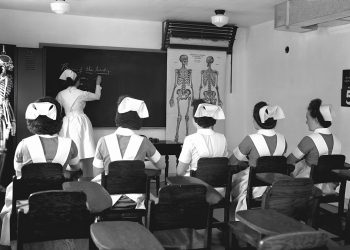No products in the cart.
The Strategic Role of Rest in Career Advancement
Strategic rest is crucial for career growth. This article explores recovery optimization and renewal techniques for professionals.
Seattle, USA — The modern workplace is a relentless machine. Employees are pushed to their limits, often leading to burnout and diminished productivity. Yet, research indicates that the key to maximizing performance may lie not in working harder, but in working smarter—specifically, by adopting strategic rest practices.
Strategic rest involves intentional breaks and recovery periods designed to enhance overall performance. As organizations increasingly demand high performance, understanding the importance of rest becomes essential not only for individual well-being but also for organizational success.

understanding Strategic Rest
At its core, strategic rest is about optimizing recovery. A study published in the Journal of Occupational Health Psychology found that employees who incorporate regular breaks into their workday report higher levels of productivity and job satisfaction [1]. This concept challenges the traditional view that constant work leads to the best results. Instead, it emphasizes that regular intervals of rest can boost creativity, decision-making, and overall job performance.
 Banking & Finance
Banking & FinanceCrypto Payroll: A New Frontier After Silicon Valley Bank Collapse
As traditional banking faces challenges, crypto payroll could offer new solutions for financial stability and worker empowerment.
According to Dr. Alex Pang, author of Rest: Why You Get More Done When You Work Less, effective rest is not merely about taking time off; it’s about being intentional with that time. “Rest is not a luxury; it’s a necessity for achieving peak performance,” he states [2]. This perspective is gaining traction in corporate cultures that once prioritized endless hours over well-being.
Moreover, a study by the Harvard Business Review found that employees who regularly engage in rest activities are 20% more productive than their overworked counterparts [4].
The Science Behind Rest and Recovery
Research supports the assertion that strategic rest can improve cognitive function. A report from the American Psychological Association shows that taking breaks can enhance focus and reduce fatigue, leading to better work outcomes [3]. Moreover, a study by the Harvard Business Review found that employees who regularly engage in rest activities are 20% more productive than their overworked counterparts [4].
Different techniques for integrating strategic rest into daily routines exist. Mindfulness practices, such as meditation and deep-breathing exercises, can provide quick mental resets. Additionally, microbreaks—short, frequent breaks during work hours—have been shown to help maintain energy levels throughout the day. Companies like Google and Microsoft have incorporated rest periods into their workplace culture, creating spaces for relaxation and rejuvenation that foster creativity and innovation.
Real-World Applications and Benefits
Adopting a culture of strategic rest can lead to significant benefits for both employees and organizations. For instance, companies that encourage regular breaks have reported lower turnover rates and higher employee engagement [5]. This translates to a more stable workforce and reduced recruitment costs. Furthermore, organizations that prioritize employee well-being often see improved company reputation, attracting top talent in competitive job markets.
 AI
AIHow AI is Revolutionizing the Mining Industry
AI is reshaping the mining industry, enhancing safety and efficiency while transforming the roles of workers and engineers. Explore this…
Read More →As businesses navigate a post-pandemic world, the emphasis on mental health and well-being is more pronounced. The World Health Organization has highlighted the importance of workplace mental health, urging companies to foster environments that support recovery and resilience. In this context, strategic rest is not just a personal choice—it’s a corporate imperative.
Looking to the Future
As the conversation around work-life balance continues to evolve, embracing strategic rest could become a defining feature of successful organizations. The future of work may see a shift toward flexible hours and remote work options that allow for personalized rest schedules. As technology enables more remote and hybrid work models, the importance of integrating strategic rest will be more critical than ever.
Additionally, microbreaks—short, frequent breaks during work hours—have been shown to help maintain energy levels throughout the day.
For professionals, adopting a mindset that values rest can lead to enhanced creativity and productivity. By prioritizing renewal techniques, individuals can not only boost their performance but also improve their overall quality of life. Companies that recognize and adapt to these changing dynamics will likely emerge as leaders in their industries, fostering a culture that values both productivity and well-being.











